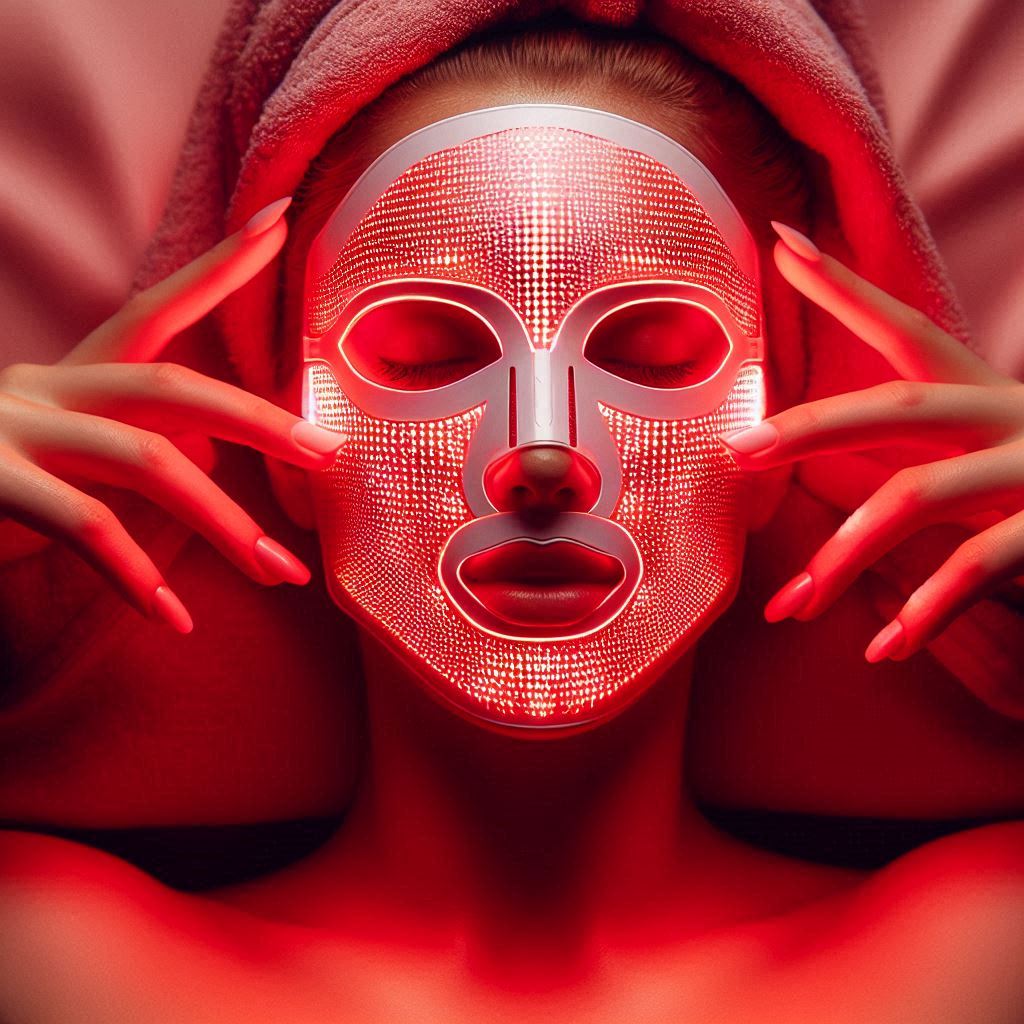Anti aging red light therapy might sound like something out of a sci-fi movie, but it’s actually a well-researched treatment that taps into the natural power of light to boost skin health. At its core, this therapy employs low-level red wavelengths of light, typically ranging from 630 to 700 nanometers, to penetrate the skin’s surface and stimulate the production of collagen and elastin, the proteins that keep skin looking firm and youthful.
Humans have been using light for healing and wellness since ancient times, but it was only in the 1960s that scientists began to seriously explore the medical benefits of red light. Fast forward to today, and it’s become a staple in skincare, revered for its potential in reducing wrinkles and fine lines. In both medical settings and home devices, red light therapy is utilized to target issues associated with aging skin.
The magic lies in the light’s ability to reach the deeper layers of the epidermis without causing harm. When absorbed by the cells, this light helps boost mitochondria function—the powerhouse of the cell—increasing energy production. This, in turn, speeds up the regeneration of damaged skin cells, promoting a more even tone and texture.
There’s an array of devices out there, from big, in-office contraptions that look like something straight out of your favorite lab scene, to smaller, more affordable handheld gadgets you can use at home. Each comes with its own instruction manual and varying price tags, but the principle remains the same: consistent use over a period of time can lead to visible improvements in skin appearance. Whether you’re considering purchasing a handheld device or booking an appointment at a clinic, understanding this therapy’s foundation helps in making informed choices.
Evaluating the Efficacy: Does Red Light Therapy Work for Anti-Aging?
Red light therapy is gaining ground in the world of skincare, with many enthusiasts touting its anti-aging benefits. The real question on everyone’s mind is: does it really work? Well, the answer is not just a straight yes or no.
Scientific research is backing up some of the claims. Studies have shown that consistent use of red light therapy can lead to improvements in skin elasticity, the reduction of fine lines, and evenness in skin tone. This happens because the therapy boosts collagen production, which naturally decreases as we age.
Comparing it to other treatments, red light therapy stands out for its non-invasive nature. Unlike some procedures that require needles or cause discomfort, this method is gentle and usually well-tolerated. Dermatologists often suggest it as part of a comprehensive skincare routine, especially for people wary of more aggressive treatments.
As for results, patience is key. Immediate transformations aren’t the norm with red light therapy. Most users start noticing subtle changes after a few weeks of regular sessions. It requires a commitment to see the difference, but those who incorporate it into their routine often report smoother skin texture and a healthy glow.
When considering its use, it’s helpful to understand that individual experiences can vary based on skin type, device quality, and adherence to a routine. A chat with a skincare professional can provide personal insights and help set realistic expectations.
Safety and Considerations: Potential Side Effects and Expected Results
Red light therapy is generally considered safe with minimal risks, but like any skincare treatment, it’s crucial to know what you’re getting into. Most folks tolerate the therapy well, making it a popular option for those wary of harsh chemical procedures. However, some might experience mild side effects such as slight redness or dryness, especially when sessions are overdone. To keep any potential side effects in check, following the recommended usage guidelines is key. Manufacturers typically provide specific instructions on duration and frequency, with most suggesting starting with short sessions and gradually increasing as comfortable.
A big question for many is how quickly wrinkles will start to fade. While the timeline can differ from person to person, most enthusiasts see positive changes within a few weeks to months of regular use. However, consistency is everything. Missing sessions or using the device improperly could delay results.
Red light therapy might not be suitable for everyone though. Certain conditions like epilepsy or pregnancy may require caution or a nod from a healthcare provider before proceeding. Additionally, people with very sensitive skin or those prone to photosensitivity should consult with their dermatologists before beginning therapy, ensuring skin health and safety are always a priority.
Is Red Light Therapy the Best Choice? Comparing with Botox and Suitability for Different Skin Types
Comparing red light therapy to Botox might seem like comparing apples to oranges, but it’s a question lots of people ask when considering their options for battling those age lines. Red light therapy, being non-invasive and promoting natural skin processes, stands in contrast to Botox, which involves injecting botulinum toxin to paralyze muscles and smooth out wrinkles quickly.
Both have their pros and cons. Red light therapy is gentle and can be used without downtime, but it requires commitment and patience for visible results. Botox offers immediate, dramatic changes in a short period but involves needles and potential discomfort. Additionally, Botox needs regular touch-ups to maintain its effect, while red light therapy can become a part of a holistic skincare routine for long-term benefits.
When choosing between these treatments, consider your skin’s needs, type, and any specific concerns. Red light therapy could be more appealing to those with sensitive skin or an aversion to needles. On the other hand, if quick results are necessary, Botox might be the go-to, albeit with added costs and the necessity for ongoing maintenance.
Sharing insights from users can guide personal decisions too. Many people have found a happy medium by utilizing red light therapy as a supplementary treatment to other anti-aging procedures due to its compatibility with various skin types. As for anyone unsure of where to start, a discussion with a dermatologist can offer tailored advice. They can assess your skin’s condition and help you determine the best path forward, balancing efficacy, safety, and cost.

